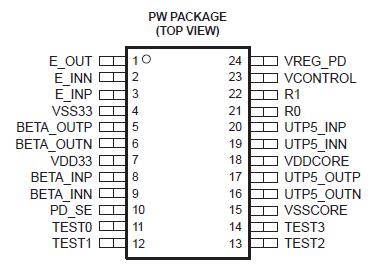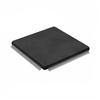TSB17BA1: Features: · Fully Supports Provisions of IEEE Std 1394b-2002 at S100B Signaling Rates· Provides One Transceiver to Drive IEEE Std1394b Signaling Across Unshielded Twisted Pair Category 5 (UTP5 or CA...
floor Price/Ceiling Price
- Part Number:
- TSB17BA1
- Supply Ability:
- 5000
Price Break
- Qty
- 1~5000
- Unit Price
- Negotiable
- Processing time
- 15 Days
SeekIC Buyer Protection PLUS - newly updated for 2013!
- Escrow Protection.
- Guaranteed refunds.
- Secure payments.
- Learn more >>
Month Sales
268 Transactions
Payment Methods
All payment methods are secure and covered by SeekIC Buyer Protection PLUS.

 TSB17BA1 Data Sheet
TSB17BA1 Data Sheet








